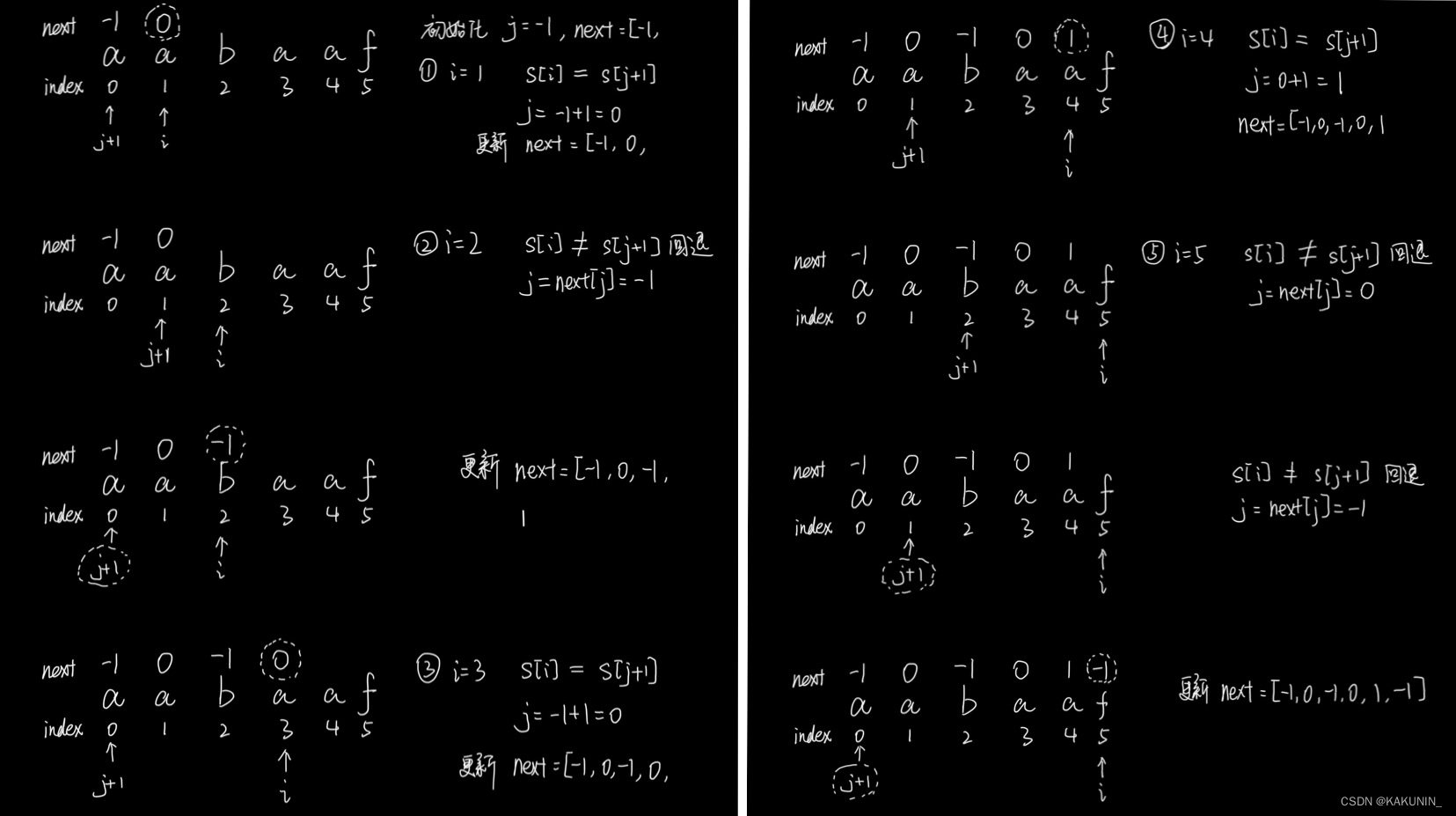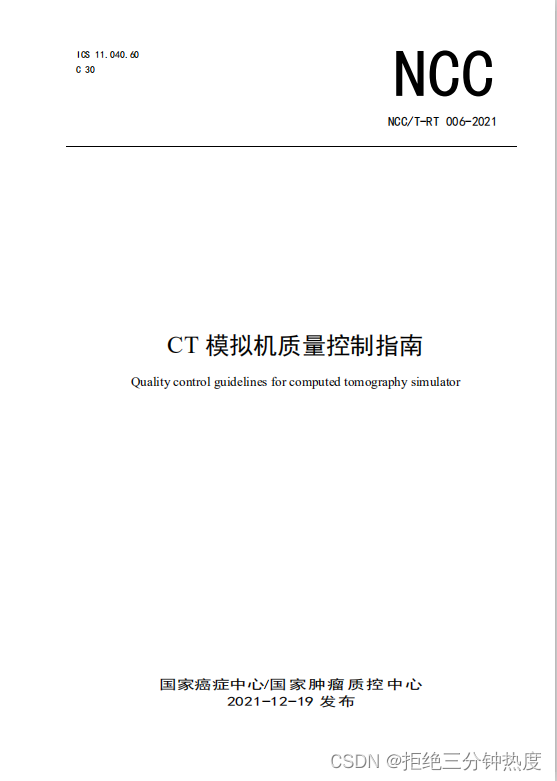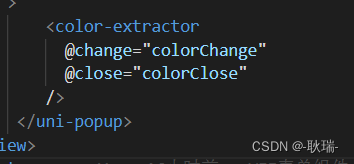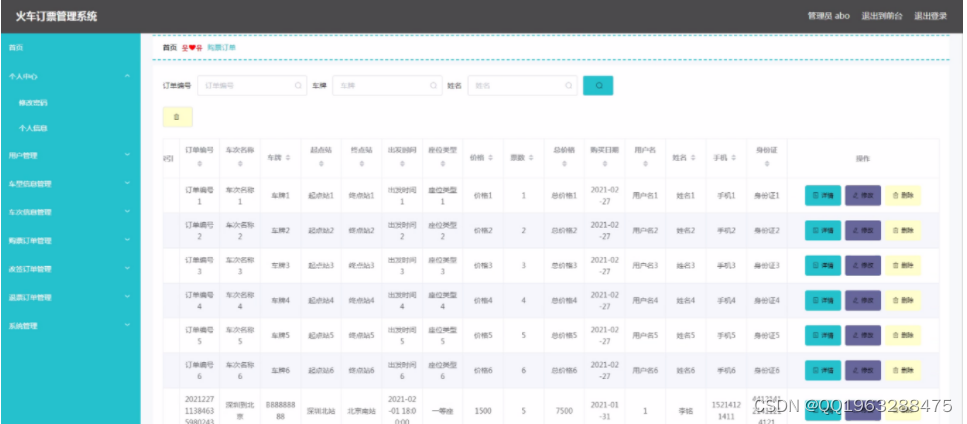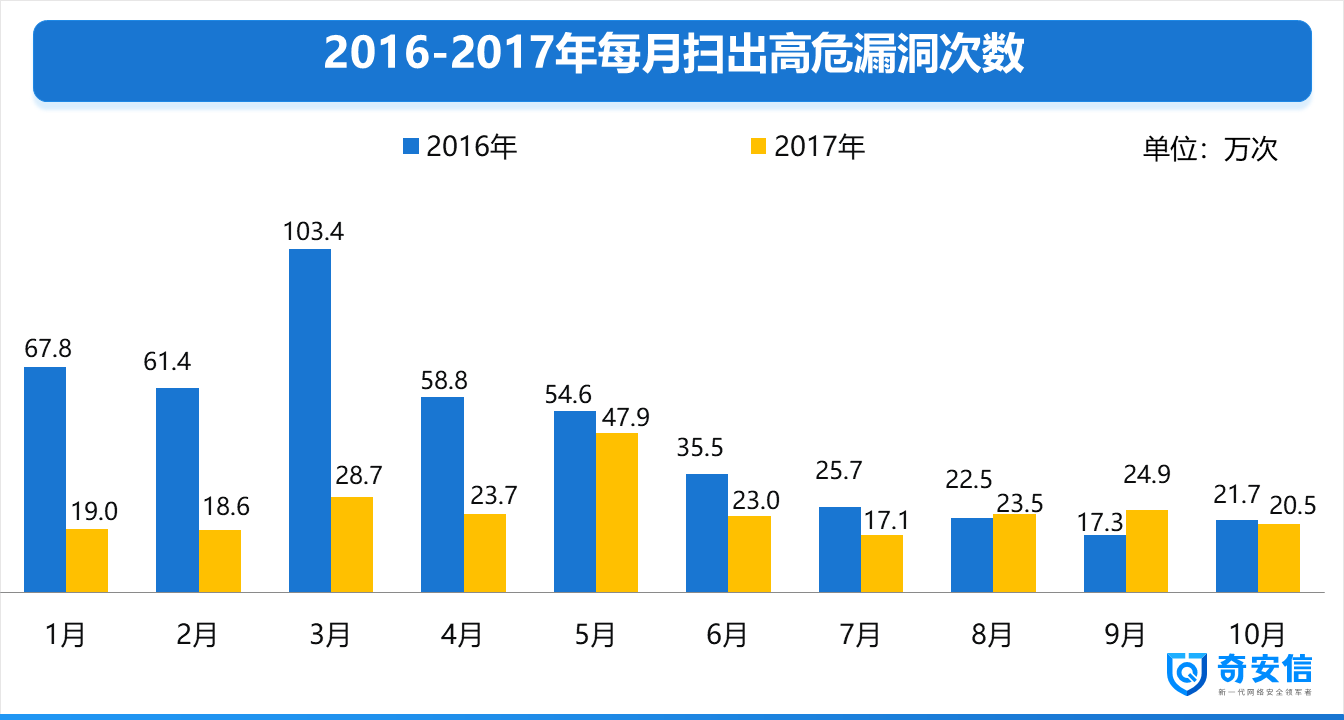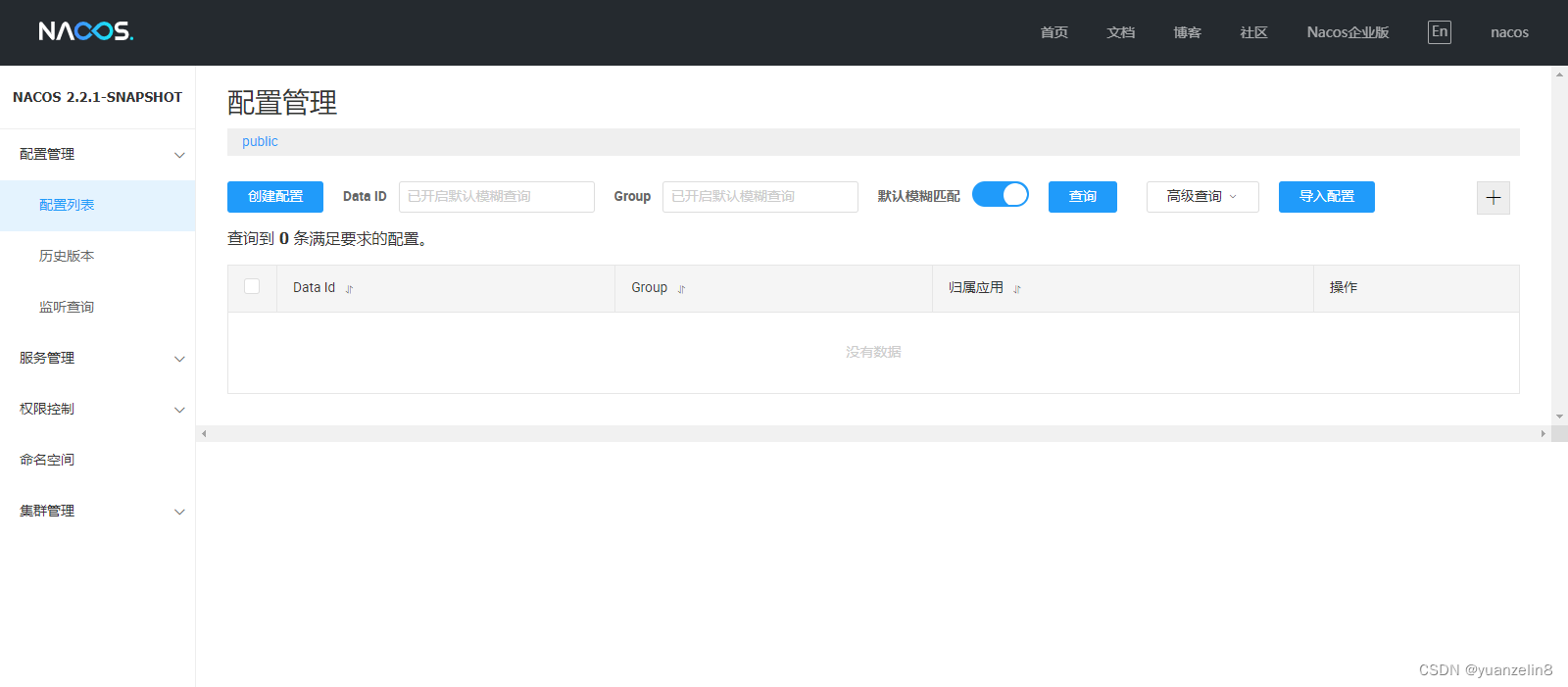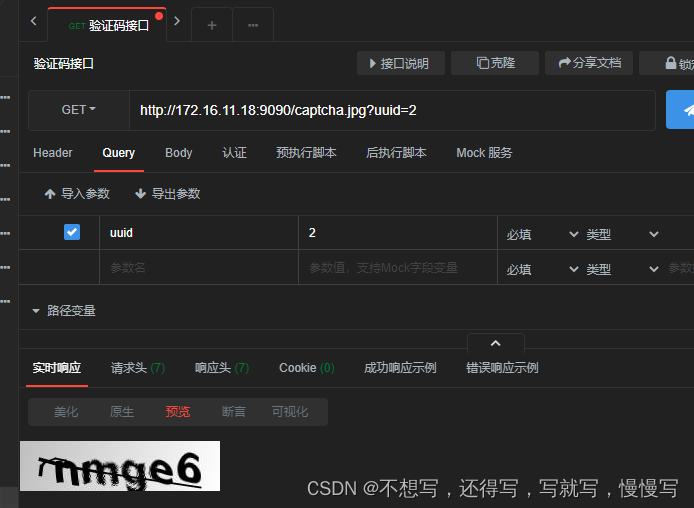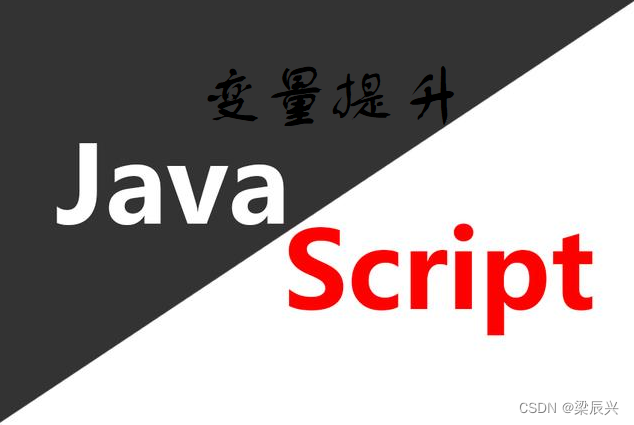
没有CAS之前实现线程安全
- 多线程环境不使用原子类保证线程安全(基本数据类型)
public class T3
{
volatile int number = 0;
//读取
public int getNumber()
{
return number;
}
//写入加锁保证原子性
public synchronized void setNumber()
{
number++;
}
}
- 多线程环境 使用原子类保证线程安全(基本数据类型)
public class T3
{
AtomicInteger atomicInteger = new AtomicInteger();
public int getAtomicInteger()
{
return atomicInteger.get();
}
public void setAtomicInteger()
{
atomicInteger.getAndIncrement();
}
}
什么是CAS
compare and swap的缩写,中文翻译成比较并交换,实现并发算法时常用到的一种技术。它包含三个操作数——内存位置、预期原值及更新值。
执行CAS操作的时候,将内存位置的值与预期原值比较:如果相匹配,那么处理器会自动将该位置值更新为新值,如果不匹配,处理器不做任何操作,多个线程同时执行CAS操作只有一个会成功。
CAS (CompareAndSwap) 有3个操作数,位置内存值V,旧的预期值A,要修改的更新值B。当且仅当旧的预期值A和内存值V相同时,将内存值V修改为B,否则什么都不做或重来。
硬件级别保证
CAS是JDK提供的非阻塞原子性操作,它通过硬件保证了比较-更新的原子性。
它是非阻塞的且自身原子性,也就是说这玩意效率更高且通过硬件保证,说明这玩意更可靠。
CAS是一条CPU的原子指令(cmpxchg指令),不会造成所谓的数据不一致问题,Unsafe提供的CAS方法(如compareAndSwapXXX)底层实现即为CPU指令cmpxchg。
执行cmpxchg指令的时候,会判断当前系统是否为多核系统,如果是就给总线加锁,只有一个线程会对总线加锁成功,加锁成功之后会执行cas操作,也就是说CAS的原子性实际上是CPU实现的, 其实在这一点上还是有排他锁的,只是比起用synchronized, 这里的排他时间要短的多, 所以在多线程情况下性能会比较好。
CASDemo代码
public class CASDemo
{
public static void main(String[] args) throws InterruptedException
{
AtomicInteger atomicInteger = new AtomicInteger(5);
System.out.println(atomicInteger.compareAndSet(5, 2020)+"\t"+atomicInteger.get());
System.out.println(atomicInteger.compareAndSet(5, 1024)+"\t"+atomicInteger.get());
}
}
源码分析compareAndSet(int expect,int update)
compareAndSet()方法的源代码:

上面三个方法都是类似的,主要对4个参数做一下说明。
var1:表示要操作的对象
var2:表示要操作对象中属性地址的偏移量
var4:表示需要修改数据的期望的值
var5/var6:表示需要修改为的新值

引出来一个问题:UnSafe类是什么?
CAS底层原理?如果知道,谈谈你对UnSafe的理解
UnSafe

是CAS的核心类,由于Java方法无法直接访问底层系统,需要通过本地(native)方法来访问,Unsafe相当于一个后门,基于该类可以直接操作特定内存的数据。Unsafe类存在于sun.misc包中,其内部方法操作可以像C的指针一样直接操作内存,因为Java中CAS操作的执行依赖于Unsafe类的方法。
注意Unsafe类中的所有方法都是native修饰的,也就是说Unsafe类中的方法都直接调用操作系统底层资源执行相应任务
变量valueOffset,表示该变量值在内存中的偏移地址,因为Unsafe就是根据内存偏移地址获取数据的。

变量value用volatile修饰,保证了多线程之间的内存可见性。
我们知道i++线程不安全的,那atomicInteger.getAndIncrement()
CAS的全称为Compare-And-Swap,它是一条CPU并发原语。
它的功能是判断内存某个位置的值是否为预期值,如果是则更改为新的值,这个过程是原子的。
AtomicInteger 类主要利用 CAS (compare and swap) + volatile 和 native 方法来保证原子操作,从而避免 synchronized 的高开销,执行效率大为提升。
CAS并发原语体现在JAVA语言中就是sun.misc.Unsafe类中的各个方法。调用UnSafe类中的CAS方法,JVM会帮我们实现出CAS汇编指令。这是一种完全依赖于硬件的功能,通过它实现了原子操作。再次强调,由于CAS是一种系统原语,原语属于操作系统用语范畴,是由若干条指令组成的,用于完成某个功能的一个过程,并且原语的执行必须是连续的,在执行过程中不允许被中断,也就是说CAS是一条CPU的原子指令,不会造成所谓的数据不一致问题。
源码分析
OpenJDK源码里面查看下Unsafe.java

假设线程A和线程B两个线程同时执行getAndAddInt操作(分别跑在不同CPU上):
1 AtomicInteger里面的value原始值为3,即主内存中AtomicInteger的value为3,根据JMM模型,线程A和线程B各自持有一份值为3的value的副本分别到各自的工作内存。
2 线程A通过getIntVolatile(var1, var2)拿到value值3,这时线程A被挂起。
3 线程B也通过getIntVolatile(var1, var2)方法获取到value值3,此时刚好线程B没有被挂起并执行compareAndSwapInt方法比较内存值也为3,成功修改内存值为4,线程B打完收工,一切OK。
4 这时线程A恢复,执行compareAndSwapInt方法比较,发现自己手里的值数字3和主内存的值数字4不一致,说明该值已经被其它线程抢先一步修改过了,那A线程本次修改失败,只能重新读取重新来一遍了。
5 线程A重新获取value值,因为变量value被volatile修饰,所以其它线程对它的修改,线程A总是能够看到,线程A继续执行compareAndSwapInt进行比较替换,直到成功。
总结
你只需要记住:CAS是靠硬件实现的从而在硬件层面提升效率,最底层还是交给硬件来保证原子性和可见性
实现方式是基于硬件平台的汇编指令,在intel的CPU中(X86机器上),使用的是汇编指令cmpxchg指令。
核心思想就是:比较要更新变量的值V和预期值E(compare),相等才会将V的值设为新值N(swap)如果不相等自旋再来。
原子引用

Java中提供了几类原子操作类,通过自旋+CAS来解决线程不安全问题。
基本类型原子类 -AtomicLong、AtomicInteger、AtomicBoolean
这些类实现了++,–,+delta的原子操作。
常用API简介
-
public final int get() //获取当前的值
-
public final int getAndSet(int newValue)//获取当前的值,并设置新的值
-
public final int getAndIncrement()//获取当前的值,并自增
-
public final int getAndDecrement() //获取当前的值,并自减
-
public final int getAndAdd(int delta) //获取当前的值,并加上预期的值
-
boolean compareAndSet(int expect, int update) //如果输入的数值等于预期值,则以原子方式将该值设置为输入值(update)
class MyNumber { @Getter private AtomicInteger atomicInteger = new AtomicInteger(); public void addPlusPlus() { atomicInteger.incrementAndGet(); } } public class AtomicIntegerDemo { public static void main(String[] args) throws InterruptedException { MyNumber myNumber = new MyNumber(); CountDownLatch countDownLatch = new CountDownLatch(100); for (int i = 1; i <=100; i++) { new Thread(() -> { try { for (int j = 1; j <=5000; j++) { myNumber.addPlusPlus(); } }finally { countDownLatch.countDown(); } },String.valueOf(i)).start(); } countDownLatch.await(); System.out.println(myNumber.getAtomicInteger().get()); } }
数组类型原子类- AtomicIntegerArray、AtomicLongArray、AtomicReferenceArray
这个就是数组类型,和单独的对象操作基本一致,只不过在设置的时候需要填入下标罢了。
public class AtomicIntegerArrayDemo
{
public static void main(String[] args)
{
AtomicIntegerArray atomicIntegerArray = new AtomicIntegerArray(new int[5]);
//AtomicIntegerArray atomicIntegerArray = new AtomicIntegerArray(5);
//AtomicIntegerArray atomicIntegerArray = new AtomicIntegerArray(new int[]{1,2,3,4,5});
for (int i = 0; i <atomicIntegerArray.length(); i++) {
System.out.println(atomicIntegerArray.get(i));
}
System.out.println();
System.out.println();
System.out.println();
int tmpInt = 0;
tmpInt = atomicIntegerArray.getAndSet(0,1122);
System.out.println(tmpInt+"\t"+atomicIntegerArray.get(0));
atomicIntegerArray.getAndIncrement(1);
atomicIntegerArray.getAndIncrement(1);
tmpInt = atomicIntegerArray.getAndIncrement(1);
System.out.println(tmpInt+"\t"+atomicIntegerArray.get(1));
}
}
引用类型原子类- AtomicReference、AtomicStampedReference、AtomicMarkableReference
- AtomicReference
@Getter
@ToString
@AllArgsConstructor
class User
{
String userName;
int age;
}
public class AtomicReferenceDemo
{
public static void main(String[] args)
{
User z3 = new User("z3",24);
User li4 = new User("li4",26);
AtomicReference<User> atomicReferenceUser = new AtomicReference<>();
atomicReferenceUser.set(z3);
System.out.println(atomicReferenceUser.compareAndSet(z3,li4)+"\t"+atomicReferenceUser.get().toString());
System.out.println(atomicReferenceUser.compareAndSet(z3,li4)+"\t"+atomicReferenceUser.get().toString());
}
}
-
AtomicStampedReference 携带版本号的引用类型原子类,可以解决ABA问题
public class ABADemo { static AtomicInteger atomicInteger = new AtomicInteger(100); static AtomicStampedReference atomicStampedReference = new AtomicStampedReference(100,1); public static void main(String[] args) { abaProblem(); abaResolve(); } public static void abaResolve() { new Thread(() -> { int stamp = atomicStampedReference.getStamp(); System.out.println("t3 ----第1次stamp "+stamp); try { TimeUnit.SECONDS.sleep(1); } catch (InterruptedException e) { e.printStackTrace(); } atomicStampedReference.compareAndSet(100,101,stamp,stamp+1); System.out.println("t3 ----第2次stamp "+atomicStampedReference.getStamp()); atomicStampedReference.compareAndSet(101,100,atomicStampedReference.getStamp(),atomicStampedReference.getStamp()+1); System.out.println("t3 ----第3次stamp "+atomicStampedReference.getStamp()); },"t3").start(); new Thread(() -> { int stamp = atomicStampedReference.getStamp(); System.out.println("t4 ----第1次stamp "+stamp); //暂停几秒钟线程 try { TimeUnit.SECONDS.sleep(3); } catch (InterruptedException e) { e.printStackTrace(); } boolean result = atomicStampedReference.compareAndSet(100, 20210308, stamp, stamp + 1); System.out.println(Thread.currentThread().getName()+"\t"+result+"\t"+atomicStampedReference.getReference()); },"t4").start(); } public static void abaProblem() { new Thread(() -> { atomicInteger.compareAndSet(100,101); atomicInteger.compareAndSet(101,100); },"t1").start(); try { TimeUnit.MILLISECONDS.sleep(200); } catch (InterruptedException e) { e.printStackTrace(); } new Thread(() -> { atomicInteger.compareAndSet(100,20210308); System.out.println(atomicInteger.get()); },"t2").start(); } } -
AtomicMarkableReference 原子更新带有标记位的引用类型对象
public class ABADemo
{
static AtomicInteger atomicInteger = new AtomicInteger(100);
static AtomicStampedReference<Integer> stampedReference = new AtomicStampedReference<>(100,1);
static AtomicMarkableReference<Integer> markableReference = new AtomicMarkableReference<>(100,false);
public static void main(String[] args)
{
new Thread(() -> {
atomicInteger.compareAndSet(100,101);
atomicInteger.compareAndSet(101,100);
System.out.println(Thread.currentThread().getName()+"\t"+"update ok");
},"t1").start();
new Thread(() -> {
//暂停几秒钟线程
try { TimeUnit.SECONDS.sleep(1); } catch (InterruptedException e) { e.printStackTrace(); }
atomicInteger.compareAndSet(100,2020);
},"t2").start();
//暂停几秒钟线程
try { TimeUnit.SECONDS.sleep(2); } catch (InterruptedException e) { e.printStackTrace(); }
System.out.println(atomicInteger.get());
System.out.println();
System.out.println();
System.out.println();
System.out.println("============以下是ABA问题的解决,让我们知道引用变量中途被更改了几次=========================");
new Thread(() -> {
System.out.println(Thread.currentThread().getName()+"\t 1次版本号"+stampedReference.getStamp());
//故意暂停200毫秒,让后面的t4线程拿到和t3一样的版本号
try { TimeUnit.MILLISECONDS.sleep(200); } catch (InterruptedException e) { e.printStackTrace(); }
stampedReference.compareAndSet(100,101,stampedReference.getStamp(),stampedReference.getStamp()+1);
System.out.println(Thread.currentThread().getName()+"\t 2次版本号"+stampedReference.getStamp());
stampedReference.compareAndSet(101,100,stampedReference.getStamp(),stampedReference.getStamp()+1);
System.out.println(Thread.currentThread().getName()+"\t 3次版本号"+stampedReference.getStamp());
},"t3").start();
new Thread(() -> {
int stamp = stampedReference.getStamp();
System.out.println(Thread.currentThread().getName()+"\t =======1次版本号"+stamp);
//暂停2秒钟,让t3先完成ABA操作了,看看自己还能否修改
try { TimeUnit.SECONDS.sleep(2); } catch (InterruptedException e) { e.printStackTrace(); }
boolean b = stampedReference.compareAndSet(100, 2020, stamp, stamp + 1);
System.out.println(Thread.currentThread().getName()+"\t=======2次版本号"+stampedReference.getStamp()+"\t"+stampedReference.getReference());
},"t4").start();
System.out.println();
System.out.println();
System.out.println();
System.out.println("============AtomicMarkableReference不关心引用变量更改过几次,只关心是否更改过======================");
new Thread(() -> {
boolean marked = markableReference.isMarked();
System.out.println(Thread.currentThread().getName()+"\t 1次版本号"+marked);
try { TimeUnit.MILLISECONDS.sleep(100); } catch (InterruptedException e) { e.printStackTrace(); }
markableReference.compareAndSet(100,101,marked,!marked);
System.out.println(Thread.currentThread().getName()+"\t 2次版本号"+markableReference.isMarked());
markableReference.compareAndSet(101,100,markableReference.isMarked(),!markableReference.isMarked());
System.out.println(Thread.currentThread().getName()+"\t 3次版本号"+markableReference.isMarked());
},"t5").start();
new Thread(() -> {
boolean marked = markableReference.isMarked();
System.out.println(Thread.currentThread().getName()+"\t 1次版本号"+marked);
//暂停几秒钟线程
try { TimeUnit.MILLISECONDS.sleep(100); } catch (InterruptedException e) { e.printStackTrace(); }
markableReference.compareAndSet(100,2020,marked,!marked);
System.out.println(Thread.currentThread().getName()+"\t"+markableReference.getReference()+"\t"+markableReference.isMarked());
},"t6").start();
}
}
原子操作增强类原理深度解析
- DoubleAccumulator
- DoubleAdder
- LongAccumulator
- LongAdder
阿里要命题目

常用API

LongAdder只能用来计算加法,且从零开始计算
LongAccumulator提供了自定义的函数操作
Demo
public class LongAdderAPIDemo
{
public static void main(String[] args)
{
LongAdder longAdder = new LongAdder();
longAdder.increment();
longAdder.increment();
longAdder.increment();
System.out.println(longAdder.longValue());
LongAccumulator longAccumulator = new LongAccumulator((x,y) -> x * y,2);
longAccumulator.accumulate(1);
longAccumulator.accumulate(2);
longAccumulator.accumulate(3);
System.out.println(longAccumulator.longValue());
}
}
LongAdder高性能对比Code演示
class ClickNumberNet
{
int number = 0;
public synchronized void clickBySync()
{
number++;
}
AtomicLong atomicLong = new AtomicLong(0);
public void clickByAtomicLong()
{
atomicLong.incrementAndGet();
}
LongAdder longAdder = new LongAdder();
public void clickByLongAdder()
{
longAdder.increment();
}
LongAccumulator longAccumulator = new LongAccumulator((x,y) -> x + y,0);
public void clickByLongAccumulator()
{
longAccumulator.accumulate(1);
}
}
public class LongAdderDemo2
{
public static void main(String[] args) throws InterruptedException
{
ClickNumberNet clickNumberNet = new ClickNumberNet();
long startTime;
long endTime;
CountDownLatch countDownLatch = new CountDownLatch(50);
CountDownLatch countDownLatch2 = new CountDownLatch(50);
CountDownLatch countDownLatch3 = new CountDownLatch(50);
CountDownLatch countDownLatch4 = new CountDownLatch(50);
startTime = System.currentTimeMillis();
for (int i = 1; i <=50; i++) {
new Thread(() -> {
try
{
for (int j = 1; j <=100 * 10000; j++) {
clickNumberNet.clickBySync();
}
}finally {
countDownLatch.countDown();
}
},String.valueOf(i)).start();
}
countDownLatch.await();
endTime = System.currentTimeMillis();
System.out.println("----costTime: "+(endTime - startTime) +" 毫秒"+"\t clickBySync result: "+clickNumberNet.number);
startTime = System.currentTimeMillis();
for (int i = 1; i <=50; i++) {
new Thread(() -> {
try
{
for (int j = 1; j <=100 * 10000; j++) {
clickNumberNet.clickByAtomicLong();
}
}finally {
countDownLatch2.countDown();
}
},String.valueOf(i)).start();
}
countDownLatch2.await();
endTime = System.currentTimeMillis();
System.out.println("----costTime: "+(endTime - startTime) +" 毫秒"+"\t clickByAtomicLong result: "+clickNumberNet.atomicLong);
startTime = System.currentTimeMillis();
for (int i = 1; i <=50; i++) {
new Thread(() -> {
try
{
for (int j = 1; j <=100 * 10000; j++) {
clickNumberNet.clickByLongAdder();
}
}finally {
countDownLatch3.countDown();
}
},String.valueOf(i)).start();
}
countDownLatch3.await();
endTime = System.currentTimeMillis();
System.out.println("----costTime: "+(endTime - startTime) +" 毫秒"+"\t clickByLongAdder result: "+clickNumberNet.longAdder.sum());
startTime = System.currentTimeMillis();
for (int i = 1; i <=50; i++) {
new Thread(() -> {
try
{
for (int j = 1; j <=100 * 10000; j++) {
clickNumberNet.clickByLongAccumulator();
}
}finally {
countDownLatch4.countDown();
}
},String.valueOf(i)).start();
}
countDownLatch4.await();
endTime = System.currentTimeMillis();
System.out.println("----costTime: "+(endTime - startTime) +" 毫秒"+"\t clickByLongAccumulator result: "+clickNumberNet.longAccumulator.longValue());
}
}

源码、原理分析
架构

LongAdder是Striped64的子类


原理(LongAdder为什么这么快)


LongAdder是Striped64的子类,Striped64有几个比较重要的成员函数
/** Number of CPUS, to place bound on table size CPU数量,即cells数组的最大长度 */
static final int NCPU = Runtime.getRuntime().availableProcessors();
/**
* Table of cells. When non-null, size is a power of 2.
cells数组,为2的幂,2,4,8,16.....,方便以后位运算
*/
transient volatile Cell[] cells;
/**基础value值,当并发较低时,只累加该值主要用于没有竞争的情况,通过CAS更新。
* Base value, used mainly when there is no contention, but also as
* a fallback during table initialization races. Updated via CAS.
*/
transient volatile long base;
/**创建或者扩容Cells数组时使用的自旋锁变量调整单元格大小(扩容),创建单元格时使用的锁。
* Spinlock (locked via CAS) used when resizing and/or creating Cells.
*/
transient volatile int cellsBusy;
Cell - 是 java.util.concurrent.atomic 下 Striped64 的一个内部类

LongAdder为什么这么快
LongAdder的基本思路就是分散热点,将value值分散到一个Cell数组中,不同线程会命中到数组的不同槽中,各个线程只对自己槽中的那个值进行CAS操作,这样热点就被分散了,冲突的概率就小很多。如果要获取真正的long值,只要将各个槽中的变量值累加返回。
内部有一个base变量,一个Cell[]数组。sum()会将所有Cell数组中的value和base累加作为返回值,核心的思想就是将之前AtomicLong一个value的更新压力分散到多个value中去,
从而降级更新热点。

LongAdder在无竞争的情况,跟AtomicLong一样,对同一个base进行操作,当出现竞争关系时则是采用化整为零的做法,从空间换时间,用一个数组cells,将一个value拆分进这个数组cells。多个线程需要同时对value进行操作时候,可以对线程id进行hash得到hash值,再根据hash值映射到这个数组cells的某个下标,再对该下标所对应的值进行自增操作。当所有线程操作完毕,将数组cells的所有值和无竞争值base都加起来作为最终结果。

总结
- AtomicLong
- 原理:
- CAS+自旋
- incrementAndGet
- 场景:
- 低并发下的全局计算
- AtomicLong能保证并发情况下计数的准确性,其内部通过CAS来解决并发安全性的问题。
- 缺陷:
- 高并发后性能急剧下降
- AtomicLong的自旋会成为瓶颈: N个线程CAS操作修改线程的值,每次只有一个成功过,其它N - 1失败,失败的不停的自旋直到成功,这样大量失败自旋的情况,一下子cpu就打高了。
- 原理:
- LongAdder
- 原理:
- CAS+Base+Cell数组分散
- 空间换时间并分散了热点数据
- 场景:
- 高并发下的全局计算
- 缺陷:
- sum求和后还有计算线程修改结果的话,最后结果不够准确
- 原理:
自旋锁,借鉴CAS思想
自旋锁(spinlock)
是指尝试获取锁的线程不会立即阻塞,而是采用循环的方式去尝试获取锁,
当线程发现锁被占用时,会不断循环判断锁的状态,直到获取。这样的好处是减少线程上下文切换的消耗,缺点是循环会消耗CPU

/**
* 题目:实现一个自旋锁
* 自旋锁好处:循环比较获取没有类似wait的阻塞。
*
* 通过CAS操作完成自旋锁,A线程先进来调用myLock方法自己持有锁5秒钟,B随后进来后发现
* 当前有线程持有锁,不是null,所以只能通过自旋等待,直到A释放锁后B随后抢到。
*/
public class SpinLockDemo
{
AtomicReference<Thread> atomicReference = new AtomicReference<>();
public void myLock()
{
Thread thread = Thread.currentThread();
System.out.println(Thread.currentThread().getName()+"\t come in");
while(!atomicReference.compareAndSet(null,thread))
{
}
}
public void myUnLock()
{
Thread thread = Thread.currentThread();
atomicReference.compareAndSet(thread,null);
System.out.println(Thread.currentThread().getName()+"\t myUnLock over");
}
public static void main(String[] args)
{
SpinLockDemo spinLockDemo = new SpinLockDemo();
new Thread(() -> {
spinLockDemo.myLock();
try { TimeUnit.SECONDS.sleep( 5 ); } catch (InterruptedException e) { e.printStackTrace(); }
spinLockDemo.myUnLock();
},"A").start();
//暂停一会儿线程,保证A线程先于B线程启动并完成
try { TimeUnit.SECONDS.sleep( 1 ); } catch (InterruptedException e) { e.printStackTrace(); }
new Thread(() -> {
spinLockDemo.myLock();
spinLockDemo.myUnLock();
},"B").start();
}
}
CAS缺点
循环时间长开销很大
我们可以看到getAndAddInt方法执行时,有个do while

如果CAS失败,会一直进行尝试。如果CAS长时间一直不成功,可能会给CPU带来很大的开销。
引出来ABA问题
ABA问题怎么产生的
CAS算法实现一个重要前提需要取出内存中某时刻的数据并在当下时刻比较并替换,那么在这个时间差类会导致数据的变化。
比如说一个线程one从内存位置V中取出A,这时候另一个线程two也从内存中取出A,并且线程two进行了一些操作将值变成了B,
然后线程two又将V位置的数据变成A,这时候线程one进行CAS操作发现内存中仍然是A,然后线程one操作成功。
尽管线程one的CAS操作成功,但是不代表这个过程就是没有问题的。
解决方案-版本号时间戳原子引用
AtomicStampedReference
AtomicStampedReference在构建的时候需要一个类似于版本号的int类型变量stamped,每一次针对共享数据的变化都会导致该 stamped 的变化(stamped 需要应用程序自身去负责,AtomicStampedReference并不提供,一般使用时间戳作为版本号),因此就可以避免ABA问题的出现,AtomicStampedReference的使用也是极其简单的,创建时我们不仅需要指定初始值,还需要设定stamped的初始值,在AtomicStampedReference的内部会将这两个变量封装成Pair对象,代码如下所示。
public class ABADemo
{
static AtomicInteger atomicInteger = new AtomicInteger(100);
static AtomicStampedReference atomicStampedReference = new AtomicStampedReference(100,1);
public static void main(String[] args)
{
new Thread(() -> {
atomicInteger.compareAndSet(100,101);
atomicInteger.compareAndSet(101,100);
},"t1").start();
new Thread(() -> {
//暂停一会儿线程
try { Thread.sleep( 500 ); } catch (InterruptedException e) { e.printStackTrace(); }; System.out.println(atomicInteger.compareAndSet(100, 2019)+"\t"+atomicInteger.get());
},"t2").start();
//暂停一会儿线程,main彻底等待上面的ABA出现演示完成。
try { Thread.sleep( 2000 ); } catch (InterruptedException e) { e.printStackTrace(); }
System.out.println("============以下是ABA问题的解决=============================");
new Thread(() -> {
int stamp = atomicStampedReference.getStamp();
System.out.println(Thread.currentThread().getName()+"\t 首次版本号:"+stamp);//1
//暂停一会儿线程,
try { Thread.sleep( 1000 ); } catch (InterruptedException e) { e.printStackTrace(); }
atomicStampedReference.compareAndSet(100,101,atomicStampedReference.getStamp(),atomicStampedReference.getStamp()+1);
System.out.println(Thread.currentThread().getName()+"\t 2次版本号:"+atomicStampedReference.getStamp());
atomicStampedReference.compareAndSet(101,100,atomicStampedReference.getStamp(),atomicStampedReference.getStamp()+1);
System.out.println(Thread.currentThread().getName()+"\t 3次版本号:"+atomicStampedReference.getStamp());
},"t3").start();
new Thread(() -> {
int stamp = atomicStampedReference.getStamp();
System.out.println(Thread.currentThread().getName()+"\t 首次版本号:"+stamp);//1
//暂停一会儿线程,获得初始值100和初始版本号1,故意暂停3秒钟让t3线程完成一次ABA操作产生问题
try { Thread.sleep( 3000 ); } catch (InterruptedException e) { e.printStackTrace(); }
boolean result = atomicStampedReference.compareAndSet(100,2019,stamp,stamp+1);
System.out.println(Thread.currentThread().getName()+"\t"+result+"\t"+atomicStampedReference.getReference());
},"t4").start();
}
}
